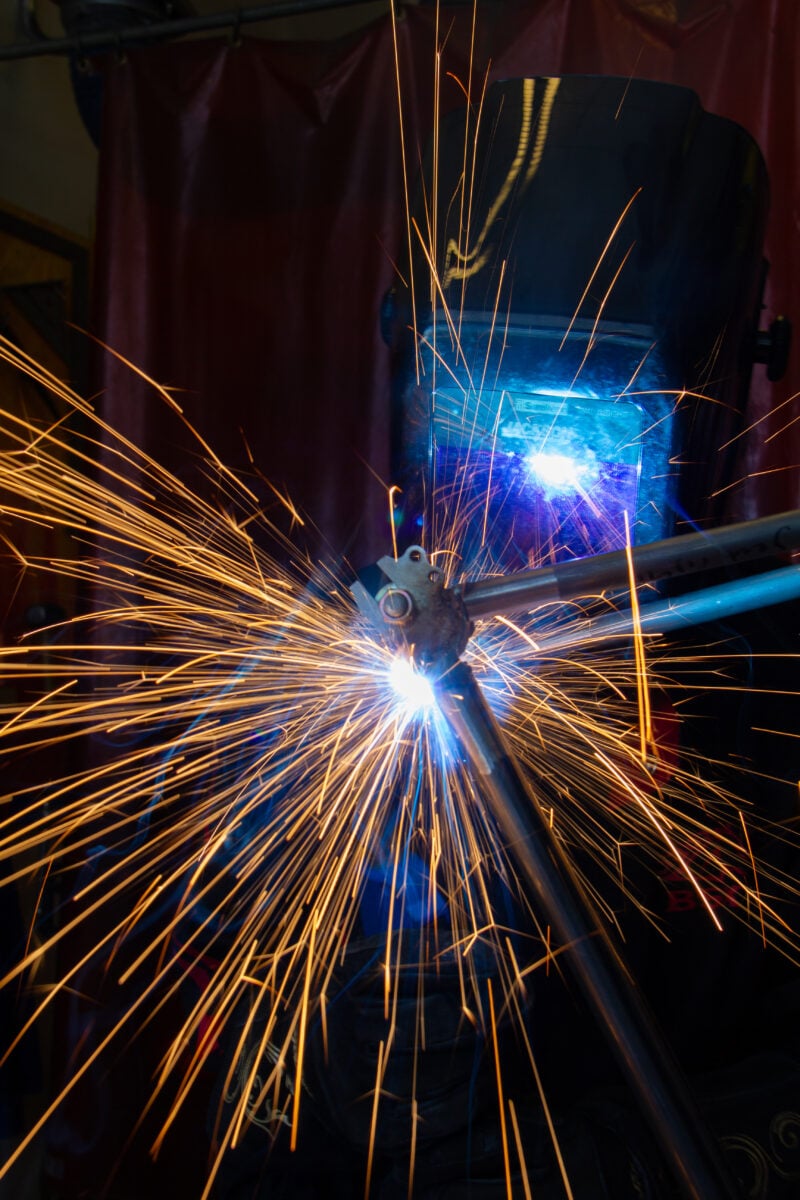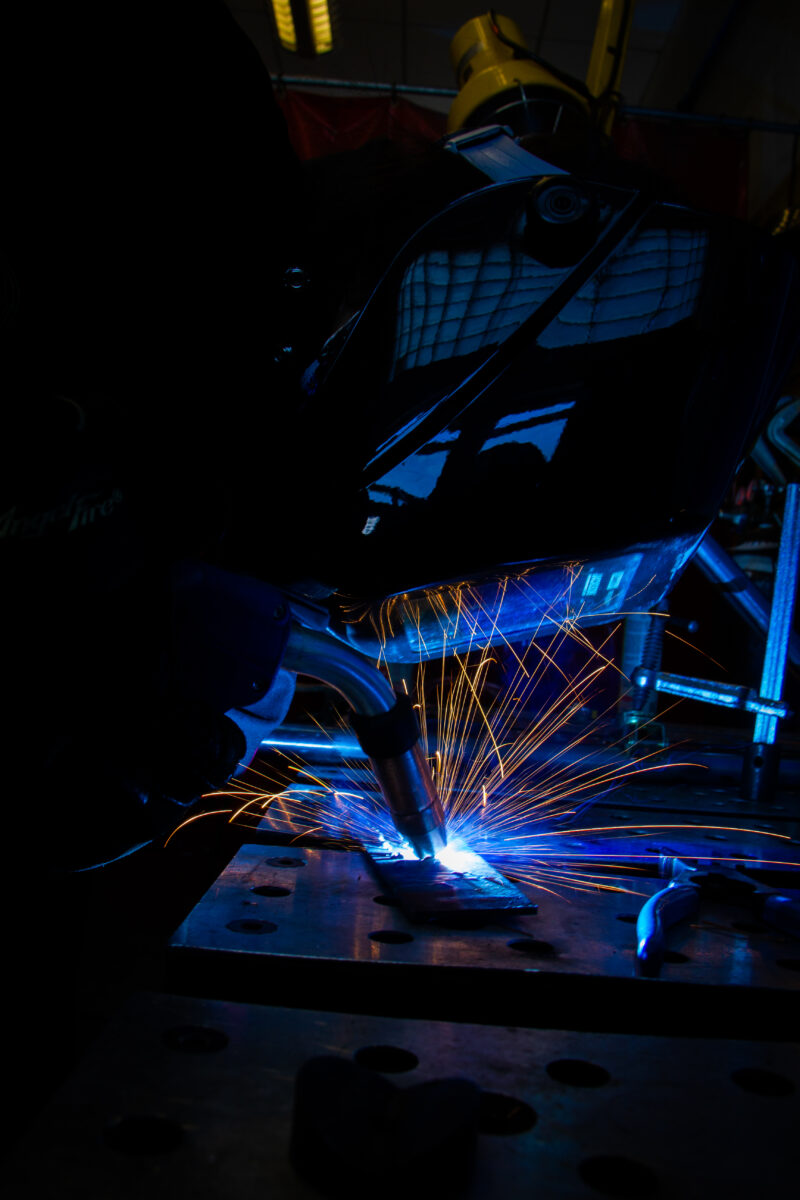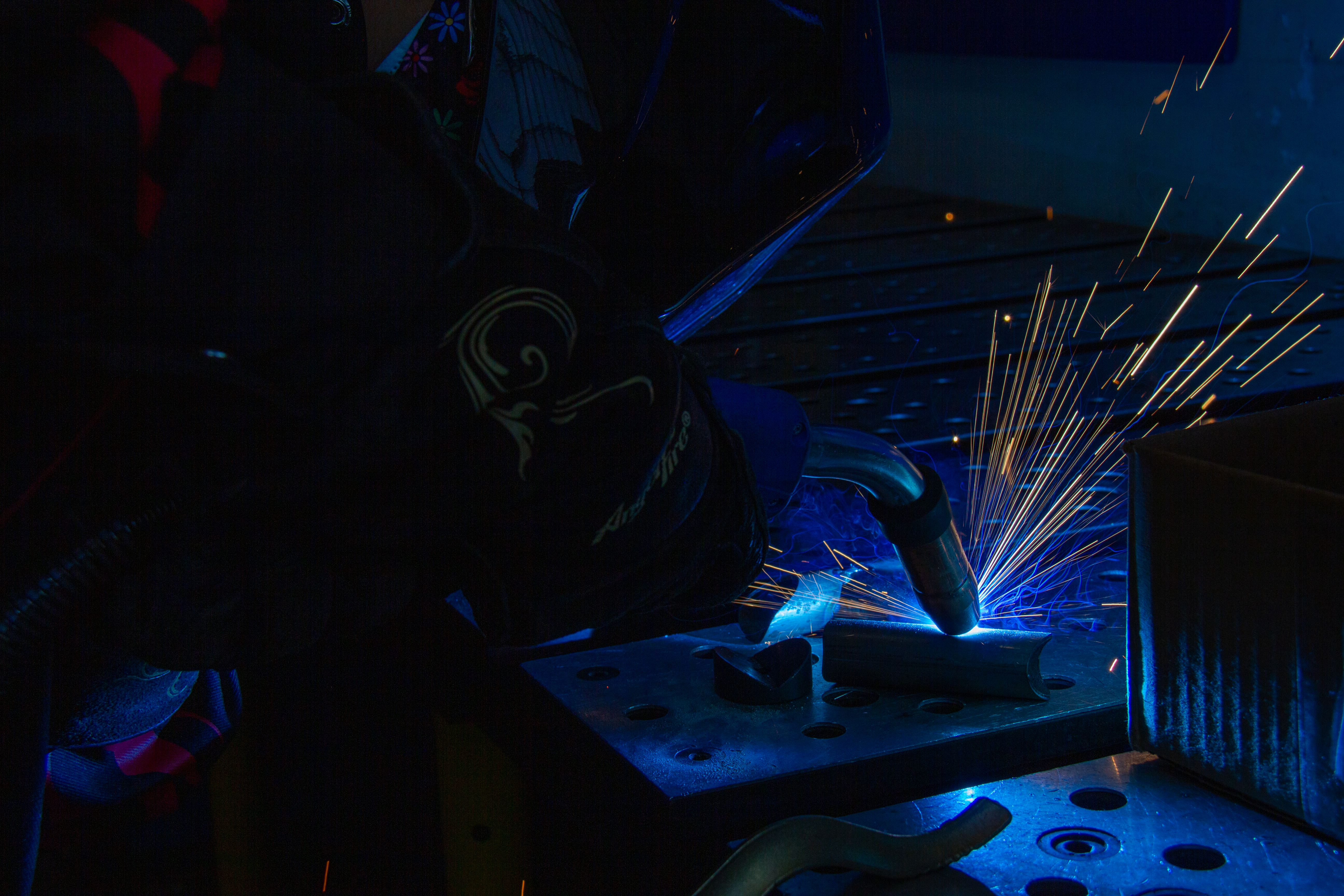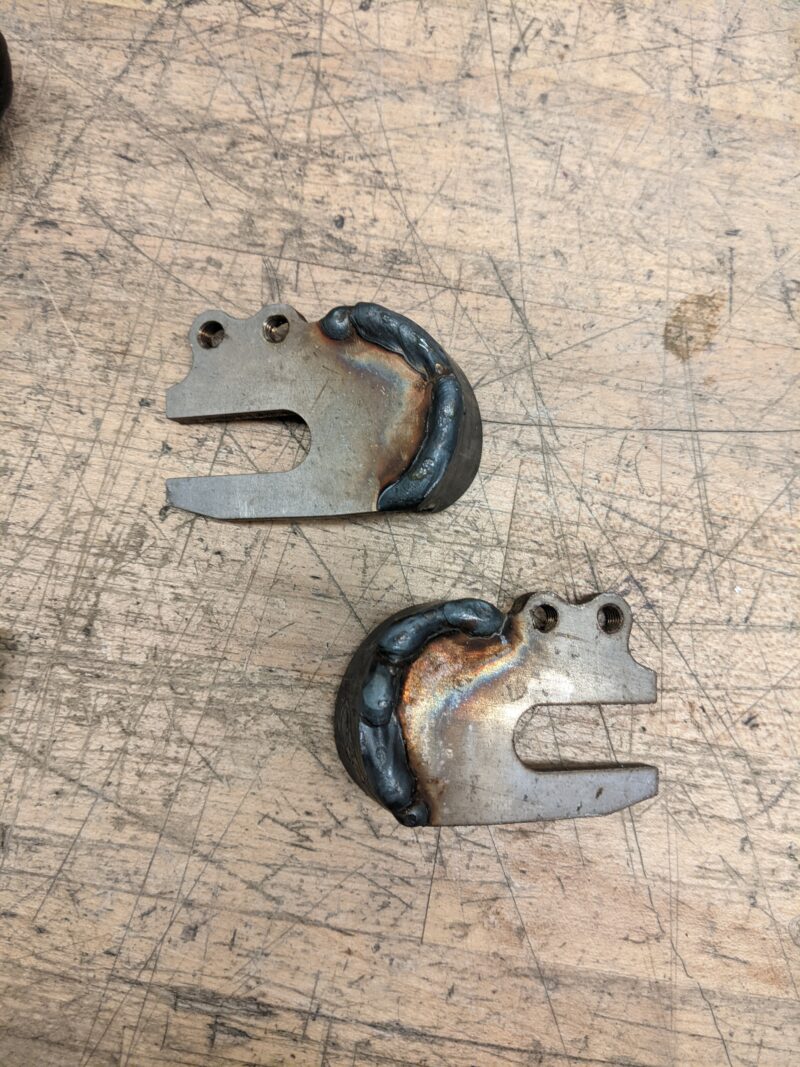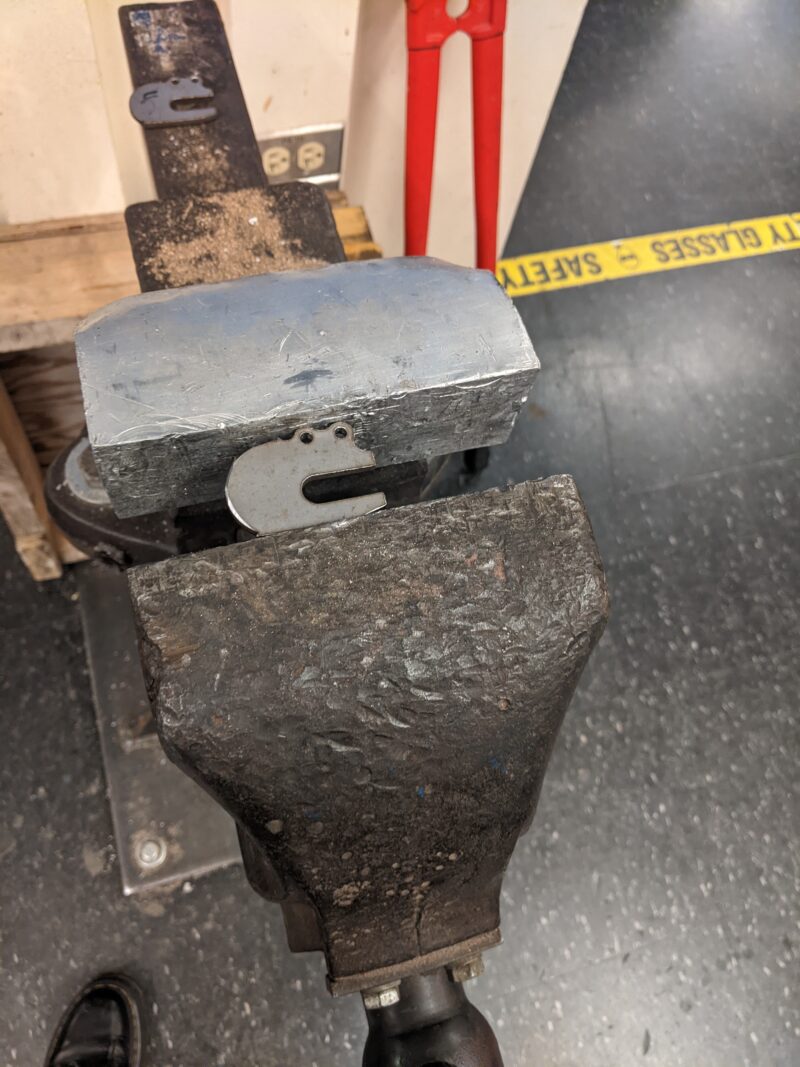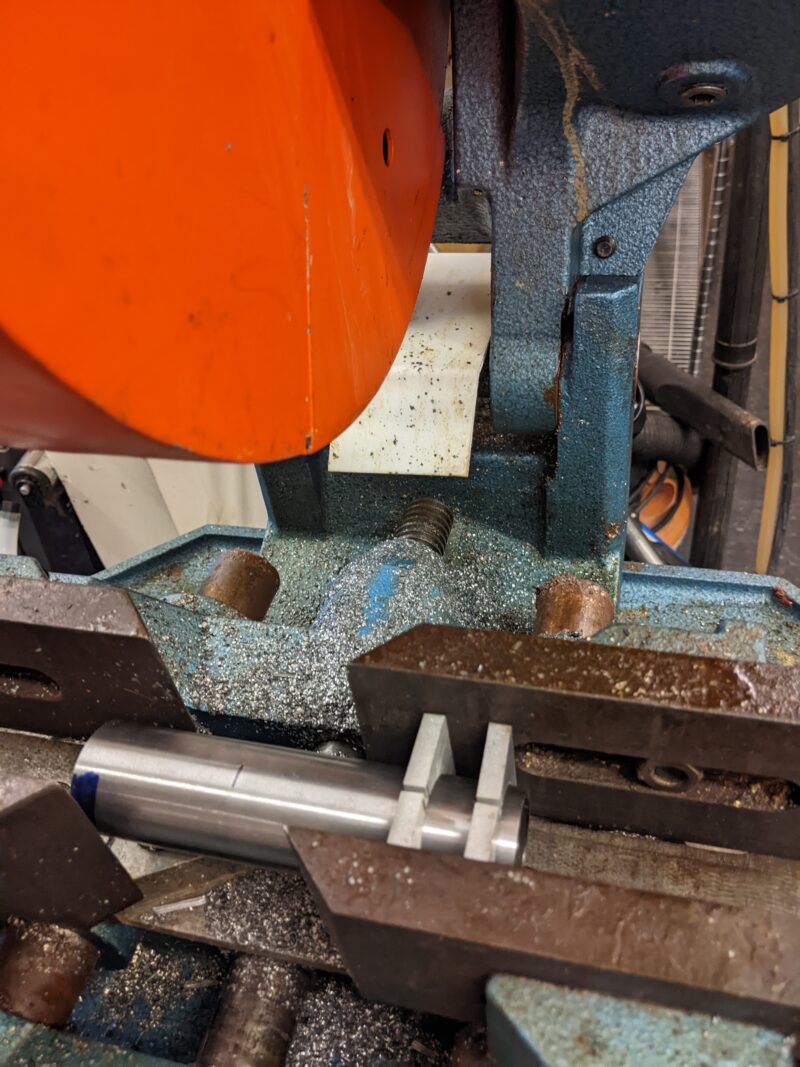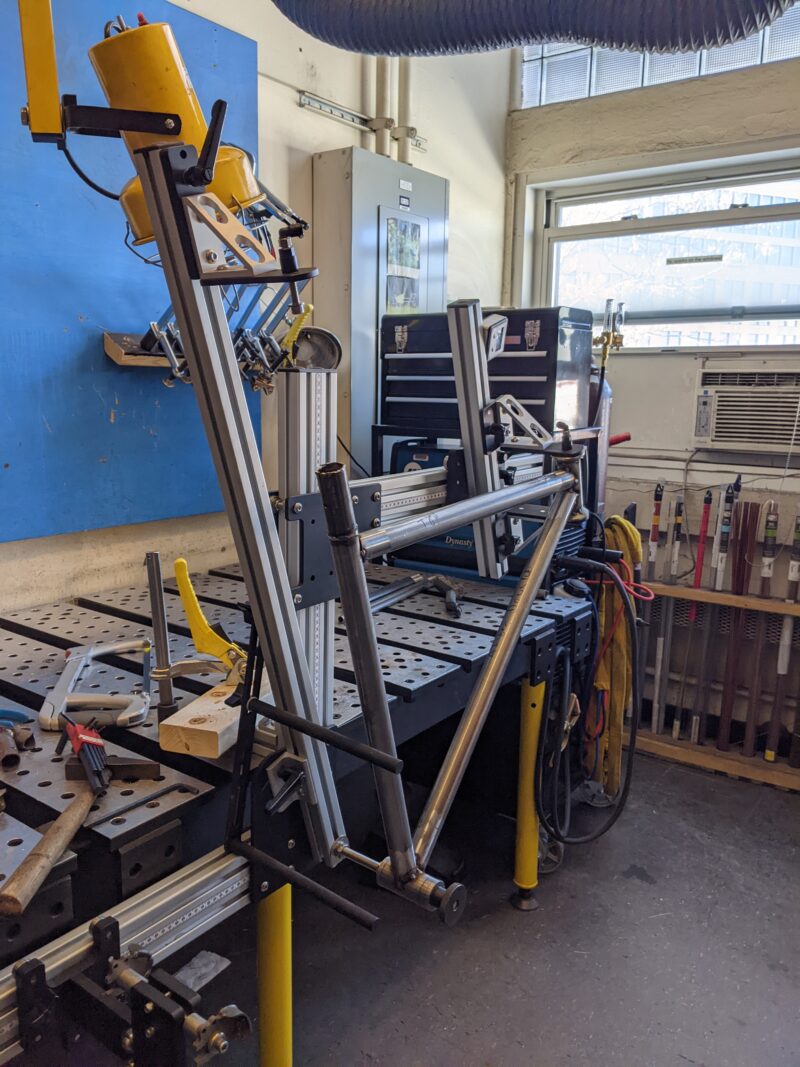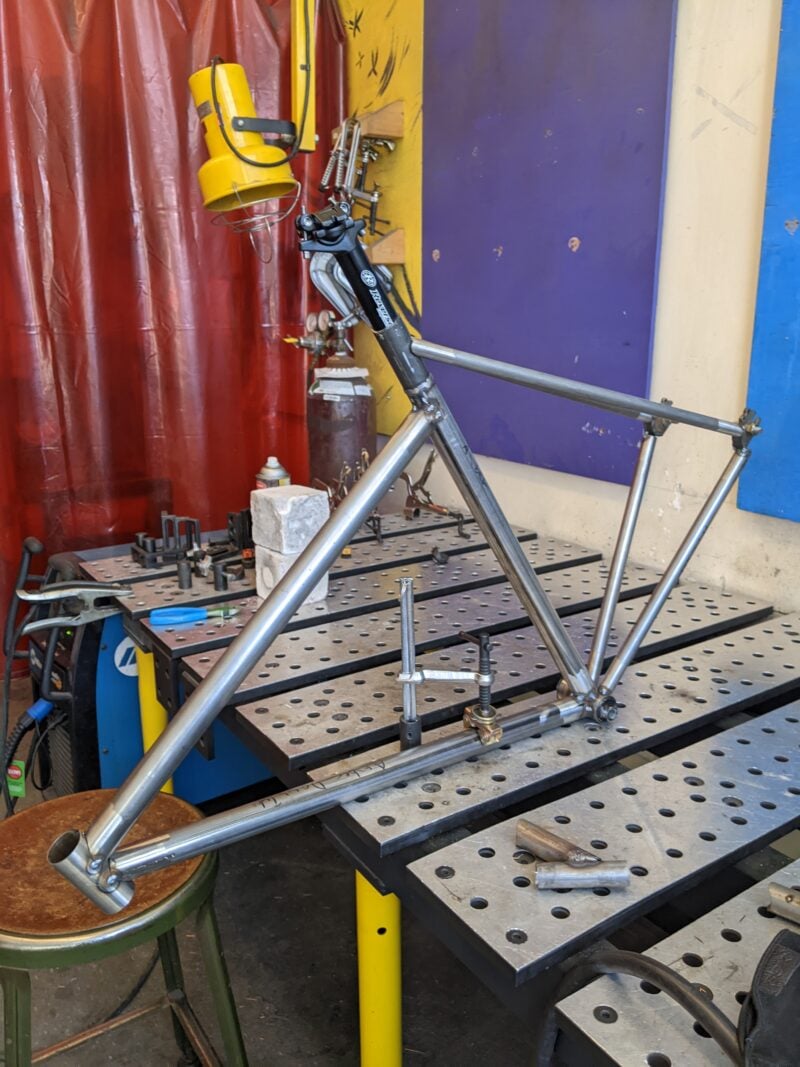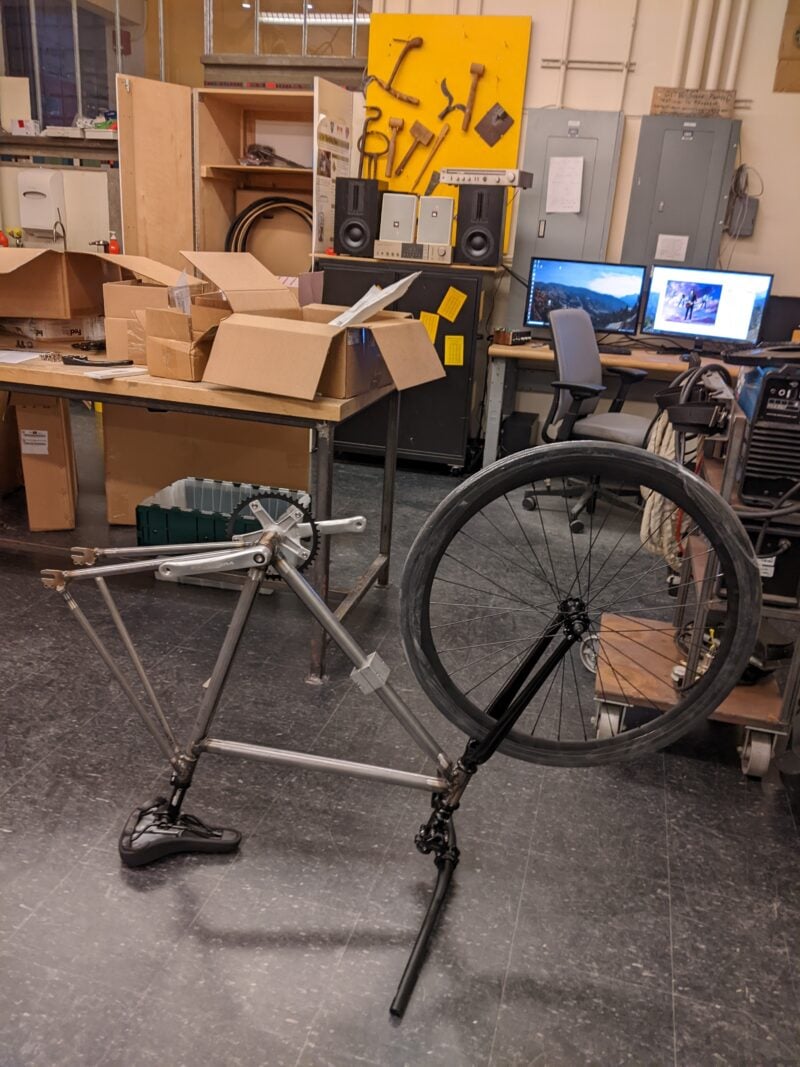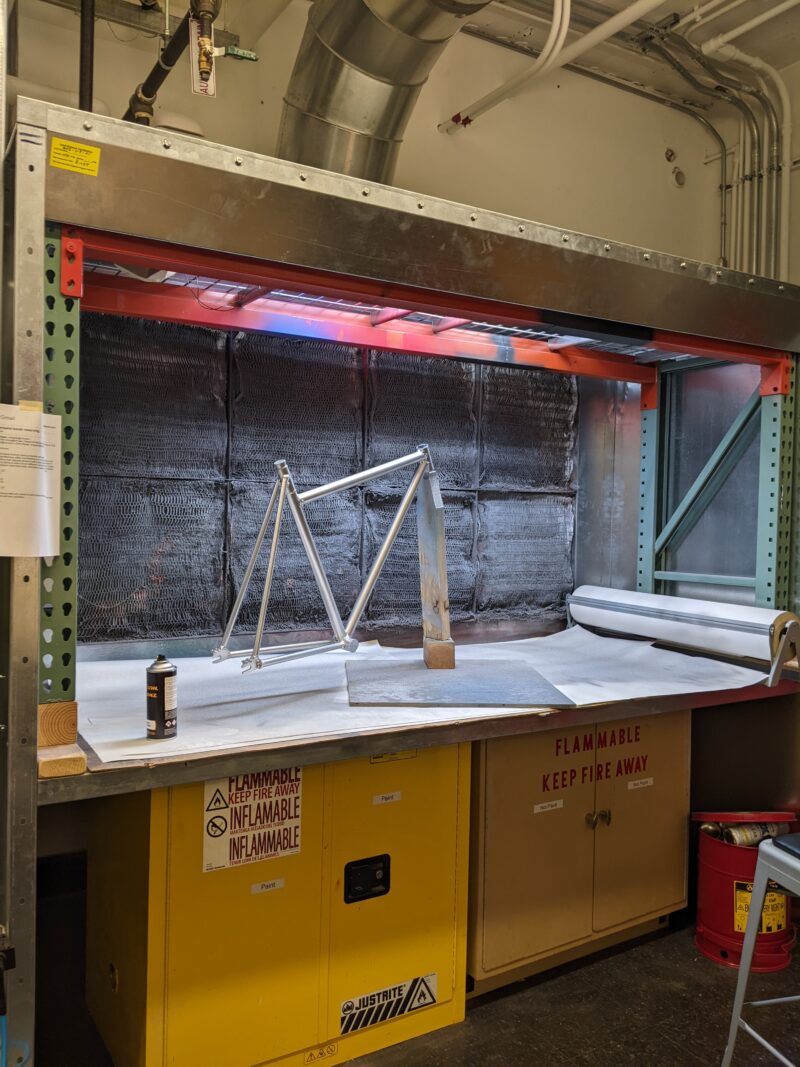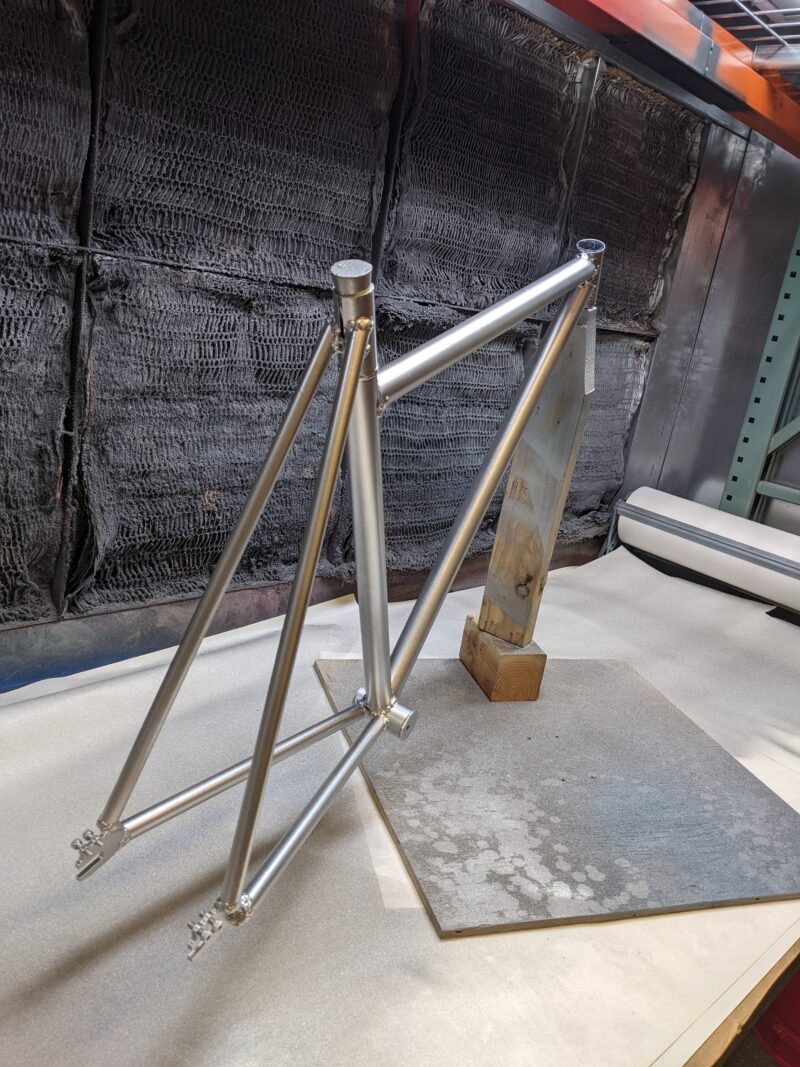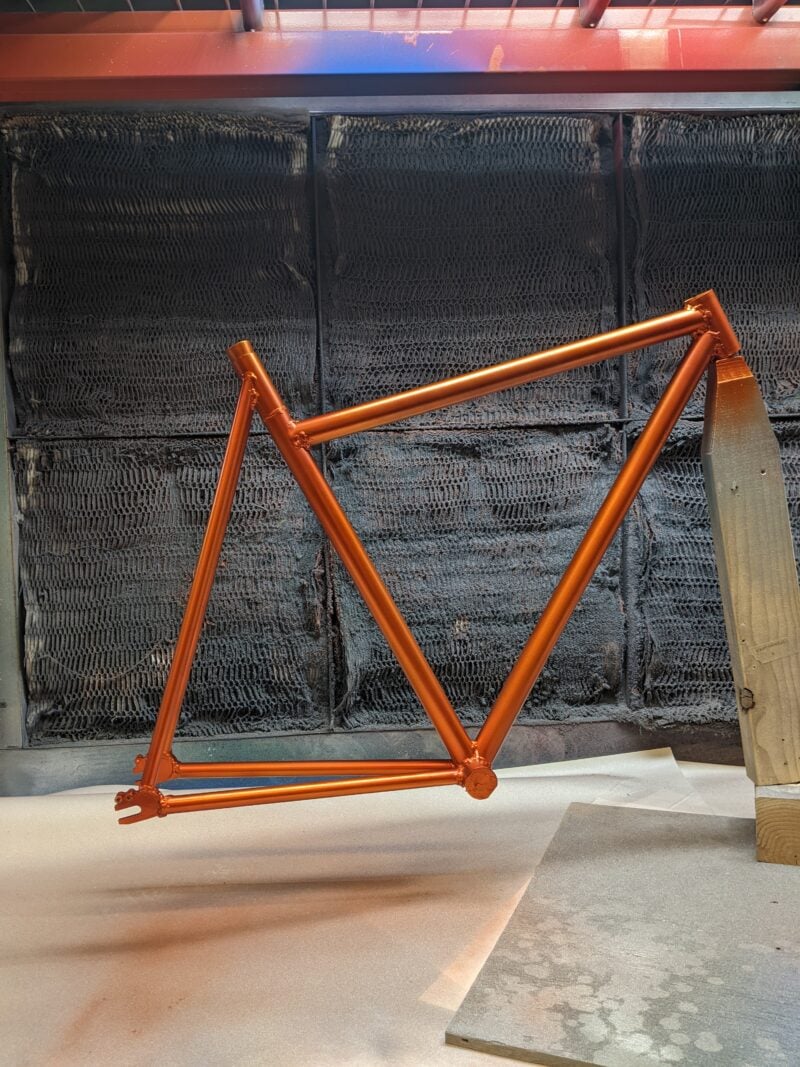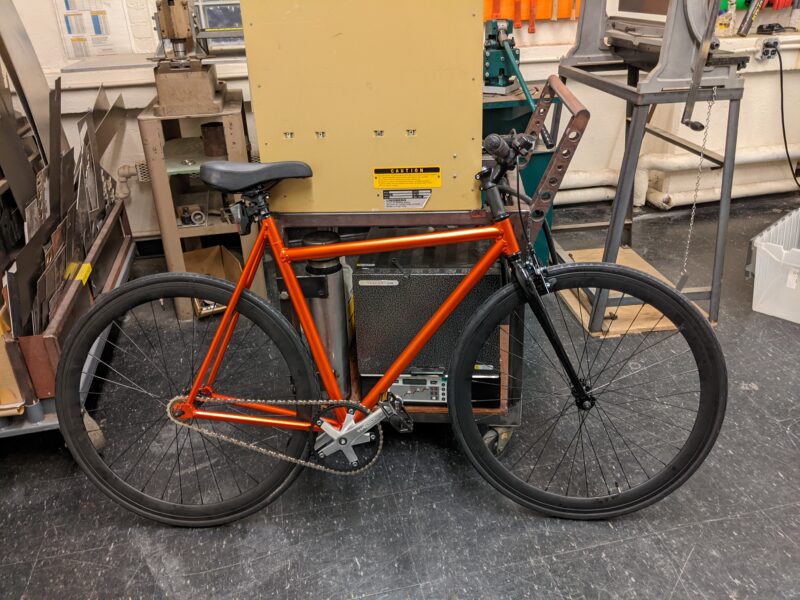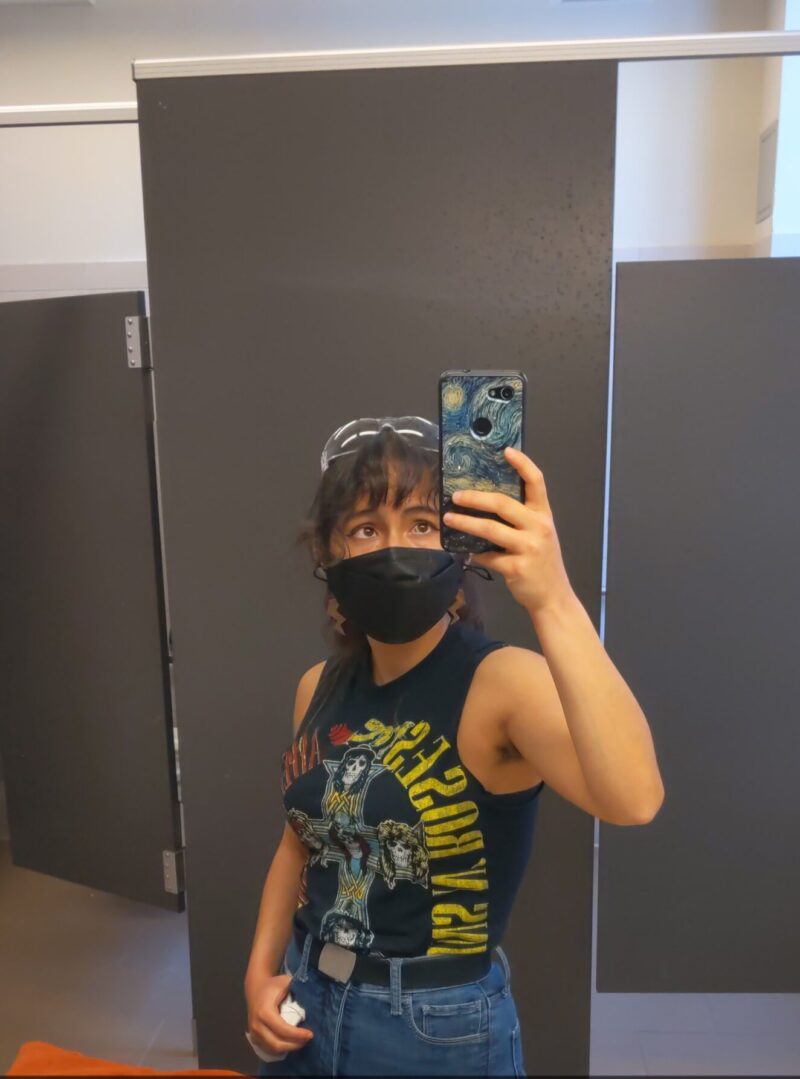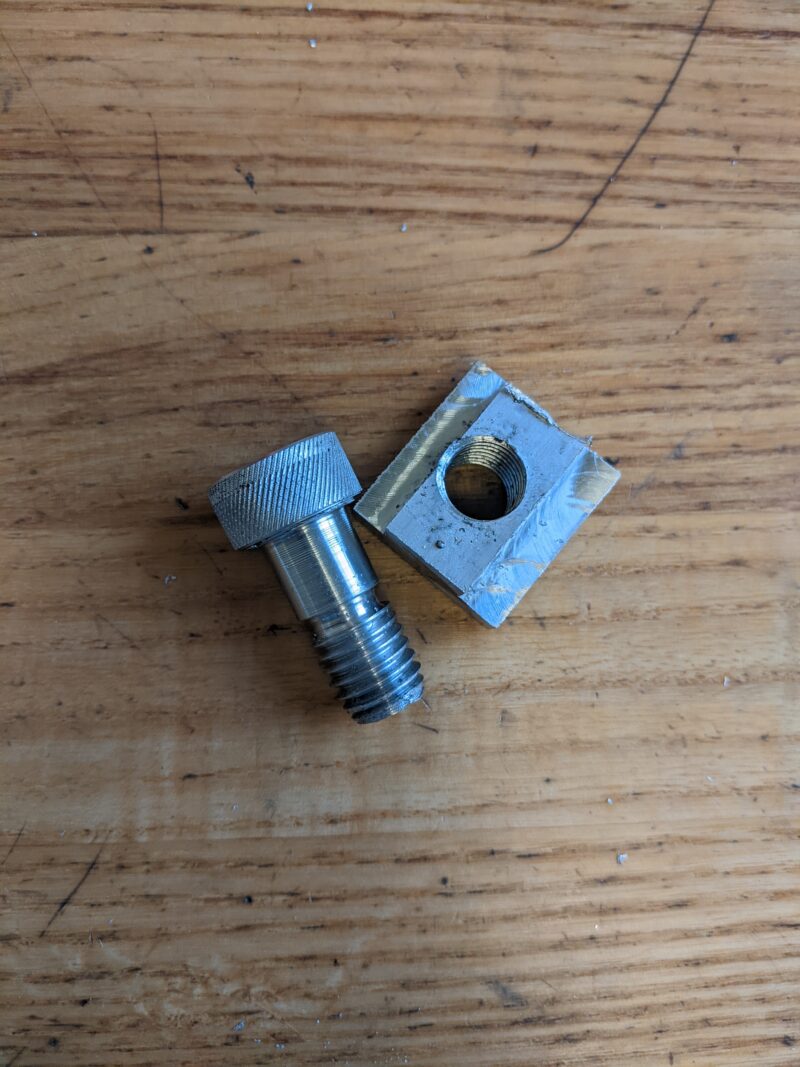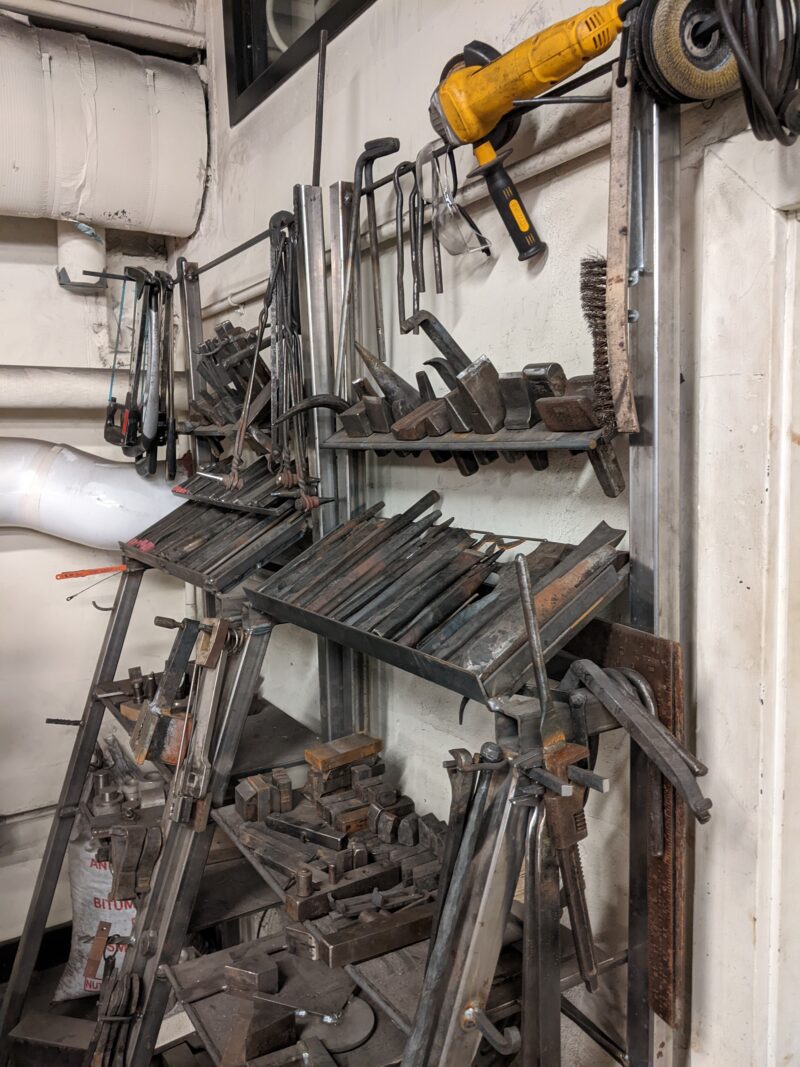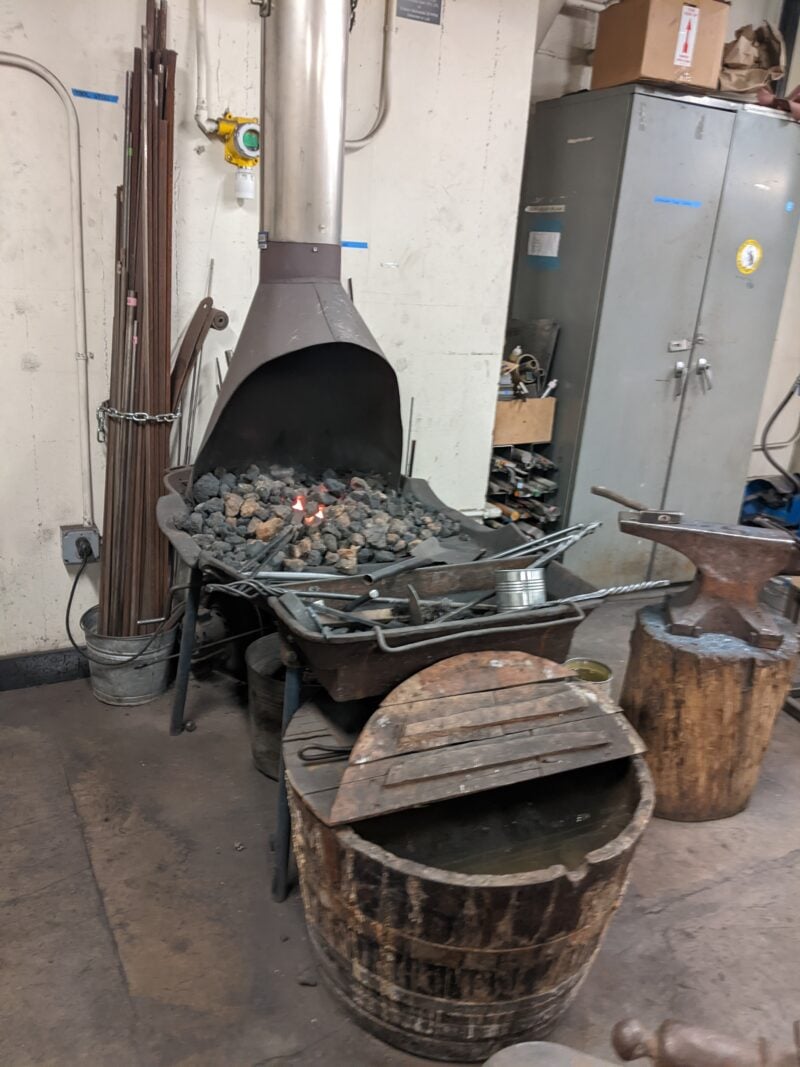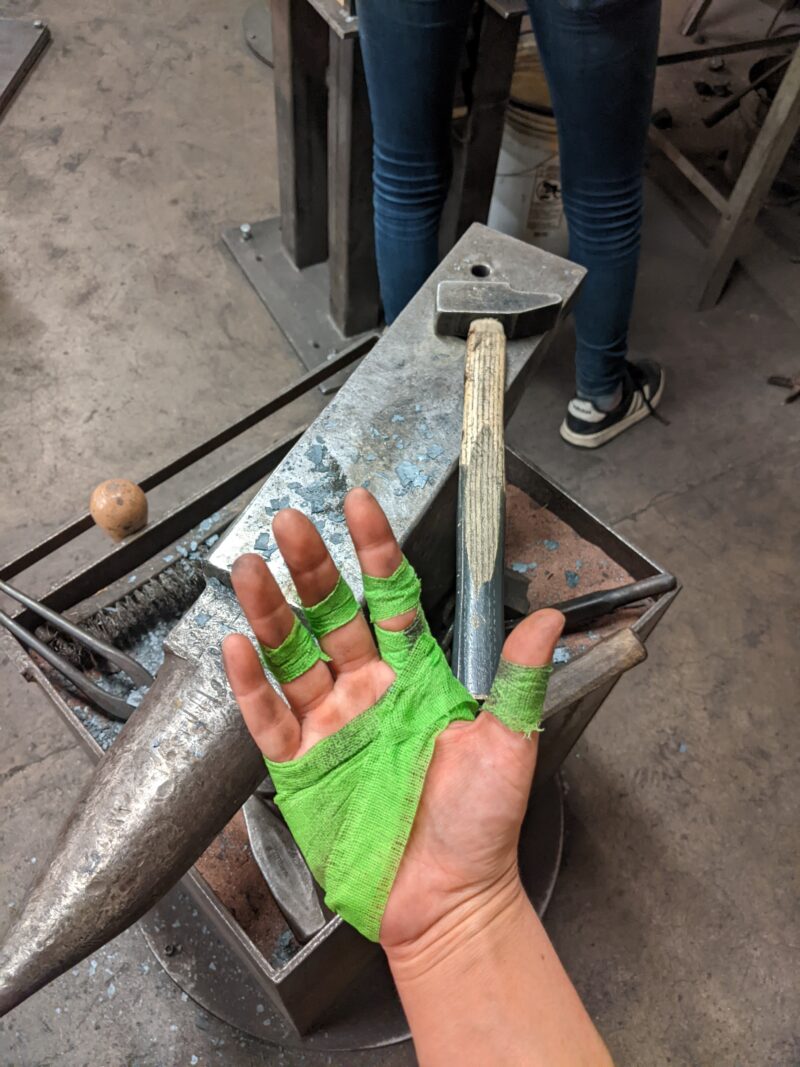
weld your own bike by Amber V. '24
and other IAP activities
Hi everybody!
I was busy this IAP,01 IAP, for y'all readers who haven't memorized all the acronyms at this unholy institvte, stands for Independent Activities Period, and takes place for all of January. We don't have regular classes, only voluntary self-imposed activities like clubs, or a handful of sped-up, all-consuming classes. Everyone is less caught under the firehose, so there tends to be more socializing. It is a glorious time to be alive. jumping between classes, people, and personal projects. I was somewhat exhausted by the end, but each of the classes felt new and valuable. I took Weld Your Own Bicycle (exactly what it sounds like), 2.670 (learn how to use a lathe and mill), Blacksmithing (!!!), and The Art of Negotiation (“so, haggling,” said Masha).
Weld Your Own Bike (at D-Lab)

This class actually started at the very end of fall semester. MIG welding was a pre-requisite to the class, and to show that you were capable, you were required to come in and weld your seat tube.
This would be very simple had I in fact known how to MIG weld. However, I did not. I had been trained on TIG welding, which is more versatile but harder, and I hadn’t practiced much. During training I melted several holes into the practice material and accidentally connected the tungsten stick to the welding arc (for context, this is bad).
So I came in to D-Lab and did a lot of practice welds, and burned a couple holes into scrap metal. When I felt confident that I wouldn’t burn any holes in the actual seat tube, I welded that. The welds weren’t pretty, but they were solid, as welding tends to be.
Then we left for break, and came back and began work the very first day of IAP.
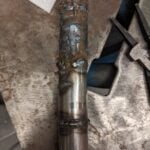
a lot of practice welds
I showed up that first day in a Killers band shirt, goggles hanging from the neck, a cup of coffee in either hand.02 one was for my friend Audrey I felt like I’d landed on a brand.
Jack and Maldy, the instructors, had already laser-cut the tubes for us, so all we had to do was weld ’em together. Simple, yah?
Before you set up to weld, you turn on the fan or open a window, so fumes don’t build up in the room. You turn on the shielding gas, check the settings of the welder. You suit up — jacket with sleeves that flop over your hands, the smallest set of gloves, a hood you’ll flip up and down as you go. It feels like a lot, the first few times. My hands were shaking from caffeine, consumed in excess to make up for too little sleep.
Then you clamp your pieces down, track where your welding gun will go, and press the trigger.
Electricity sparks and the world goes black except for a single orange bead. You can’t quite see the piece, just guess where it begins and ends. You move the weld gun quickly — linger and you’ll burn holes you don’t yet know how to fix — but not too quickly, or else the weld will sit atop the workpiece and not fuse much of anything together. And you don’t know how to grind that off and re-do it, either.
Beginners make mistakes, and this welding machine in particular was finicky. The wire feed would go too slow sometimes, which made the wire tangle. If you hold the contact tip too close, or move too slow, you might fuse a bead of metal to the contact tip, which means the wire can’t feed. You don’t know how to replace it.
Needless to say I did all of these things. Each time I’d freeze and think of how much time I had before one of my classmates needed to use the welding room, and the welder, with its tangled wire or clogged contact tip.
Then I’d steel myself and go to the instructors, my voice bouncing between wry, sheepish embarrassment, and the several-octaves-lower tone I adopt at Home Depot.
The instructors were chill. They showed me how to replace the contact tip (I kept the discarded ones, turned them into earrings) and re-feed the tangled wire. They demonstrated how to cover up a hole I burned, and told me what I’d done wrong, so that next time it would come out clean. I ground down a handful of welds, got used to the way the angle grinder sprayed sparks.
My photographer friend Audrey Chen (@auds_chen) came to hang out several times, and she took some pretty epic shots. I loved watching her figure out how to frame them. She’d set up a shot while I figured out how I’d approach a certain weld; then I’d begin, and she’d shoot blind, because you can’t see anything through the welding helmets.
In the next few days, we assembled the bikes, took some photos, and then dis-assembled them to paint the frames. Mine is bright orange, the same color as my car back in Arizona.
I learned a lot — bike assembly is more specialized than I knew, and many of the tools we used come up again and again — but the most important part was simply learning to weld. I can set up in minutes now, steady and sure. Many more projects are possible with welding; little ideas I’d been floating since fall, a half-finished lyra I was itching to work on.
As long as this shiny new bike doesn’t slip on the ice.
UROP
I had a lot of data left to analyze at my UROP, a methane lab I blogged about this summer. This was entirely my fault; during fall I kept pushing it back. Collecting data out on lakes is lovely; running it through a gas chromatograph, which runs in 8-minute cycles, less so.
I knew I had to get it done during IAP. Maybe in just one night.
I went in to lab at 10pm with Masha. We talked vaguely about being human this semester, getting sleep and reading books and thinking thoughts. Around 11 or 12, Masha went to bed, and I spent an hour cleaning data I hadn’t looked at for weeks.
I paced the lab under cold florescent lights, tired but not unhappy. I thought of the protagonist of a novel I’d written before I ever came to MIT, who spent her days and nights in labs. When I wrote it, I was in Europe, and operating this sort of machinery, with graphics that were last updated in the ’90’s, seemed foreign and fictional.
8-minute cycles, which require only 1 minute of prep, leave a lot of time for thinking.
My mom, back in Tucson, would still be awake. I called her and told her about how much time I spent in workshops, how I was eating smoothies now, and how was she doing? How was her company, how did the duck and Jeffrey the turkey fare back home?
Then my mom went to bed, too, and I paced the lab some more. The minutes trickled by, 3 a.m., 4.
And then I finished.

this is a gas chromatograph
Art of Negotiation at Sloan
Sloan moved this class to zoom, given the rise of omicron. It was from 9 to 5 for three days straight. The class was hella engaged though, and the prof was great. We didn’t explore new content the way you do in technicals, but rather applied models to behavior most of us had experienced or heard of before. It gave me a good framework for styles and tactics of negotiation. The bottom line was to try to understand your opponent and seek to satisfy their needs in a way that satisfies yours, too.
We ran a few practice sessions, some of which went very nicely for me. My dad is a stubborn negotiator. Maybe his stories, told over years of driving my sisters and me to school, rubbed off.
2.670 (the MechE flashlight class)
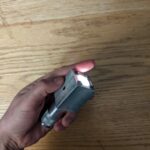
2.670 was all-day, in-person class that lasted two days. We learned how to use the mill and lathe by making cute little flashlights.
I came in wearing a Guns’n’Roses shirt with cut off sleeves, lightning-bolt earrings, and scuffed Docs. The instructor explained how you can change the bit in a mill by pressing a button to release or tighten around a bit, and I was that person who was like “damn it’s been that easy the whole time? Fuck man I learned on a manual mill. I had to hit that shit with a hammer. I had to stand on a milk crate.”
Of course I did not say this out loud. I just smirked. The more tools and techniques they explained, the more I realized that I had picked this stuff up, gradually, over the course of fall semester.
2.670 was a great refresher, and the flashlight instructions got me thinking about how to use lathes and mills in a way that I hadn’t before. I felt how aluminum is soft, one wrong turn and you’ll nick it. I was getting a feel for cutting in just the right amount, so that the blades shear off not flecks of metal but spirals which rustle like tinsel when you sweep them away.
Also I made a cute flashlight.
Blacksmithing
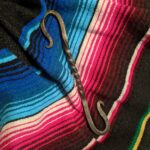
Blacksmithing is a not-for-credit class spread across three 3-hour sessions. I learned how to forge!
You come in and they show you how to forge a scroll hook (see above). First you forge a taper (or point) into the end of the bar, then bend it over the anvil, hammer it in towards yourself to make a curve. Then you do that again, in larger scale, to make a hook. Repeat that on the other side, so you have two hooks. Then heat the middle, clamp one hook in a vise, and twist. The exemplar took about twenty minutes.
Then we set to it, and it took us about two and a half hours.
The next two sessions were devoted to personal projects. My classmates made cool shit, from a rose to a hinge to a knife. I made a bottle opener with a forged leaf on the end.
“I can see you mentally taking notes for the next time you write a fantasy setting,” a friend of mine said, and man, I was. The smell of the forge is of ash and polishing wax, not machining oil. Coal dust cakes in the lines of your skin and won’t wash off for hours. The heat gets to you slowly. Blisters blossom all over your hand.
Forging feels sort of… feral. You heat the metal until it’s red or yellow, pound it and watch it distort beneath your blows. The technique of where to hit a curve to make it bend just so reminds me of making jewelry, wrapping wire, learning through mistakes and time.
There are open forge hours every Wednesday for those who have been trained. Every week, I take the time.
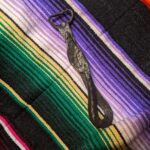
All told
“Are you busy?” you ask.
The answer is still broadly ‘yes’ — this is MIT, people pile on work — but it’s IAP, and there is time. There is not a giant pset due at 9 am tomorrow, or an essay you’ve known about for two months and still haven’t started. I got to spend time with friends, good, lazy hours, to have deep talks and shallow talks and stare at our reflections in Masha’s ceiling mirror.
It was cold as hell, but we trekked many times to the Boston Trader Joe’s, and made journeys over the bridges, up past the Science Museum, around the Esplanade.
We took whiteboards from Stata and scavenged a bunch of equipment left over from 2.009. We hauled it all up the stairs, each of us telling the other she was strong ’cause damn, whiteboards are heavy.

Ever since I declared MechE, I kept saying that I wanted to spend time making things, if only I weren’t so consumed by work. All told, I spent almost every day of IAP in a machine shop or makerspace. I found that I enjoyed it.
- IAP, for y'all readers who haven't memorized all the acronyms at this unholy institvte, stands for Independent Activities Period, and takes place for all of January. We don't have regular classes, only voluntary self-imposed activities like clubs, or a handful of sped-up, all-consuming classes. Everyone is less caught under the firehose, so there tends to be more socializing. It is a glorious time to be alive. back to text ↑
- back to text ↑
